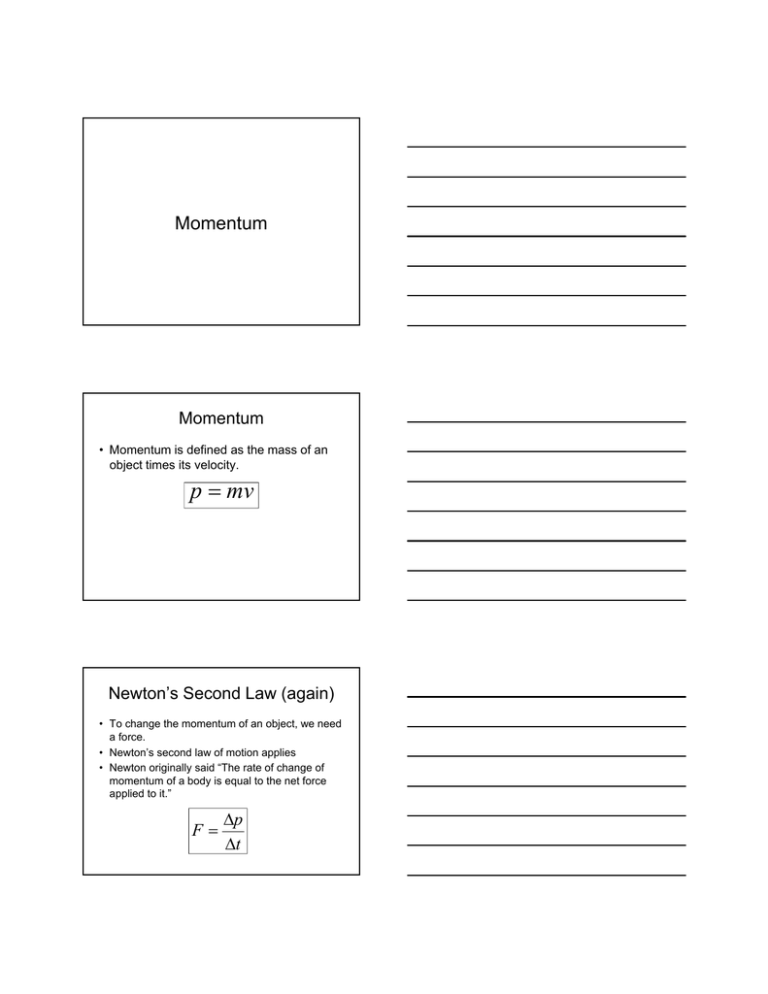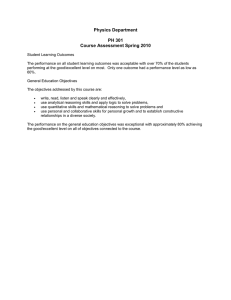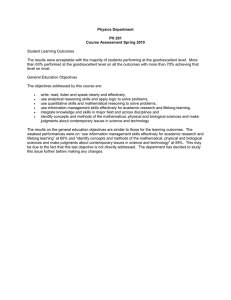mv p Momentum
advertisement

Momentum Momentum • Momentum is defined as the mass of an object times its velocity. p mv Newton’s Second Law (again) • To change the momentum of an object, we need a force. • Newton’s second law of motion applies • Newton originally said “The rate of change of momentum of a body is equal to the net force applied to it.” F p t p F t F mv2 mv1 t m(v2 v1 ) t v v a m t t F ma Example • Water leaves a hose at a rate of 1.5 kgs-1 with a speed of 20 ms-1 and is aimed at the side of a car which stops it. What is the force of the water exerted on the car? – If the water splashes back, will the force be greater or less? Conservation of Momentum • The concept of momentum is particularly important because, under normal circumstances, momentum is a conserved quantity. • Shortly before Newton’s time it had been observed that the vector sum of the momentum of two colliding objects remains constant. Before After mv1 mv2 mv1' mv2' mv1 mv2 mv1' mv2' Proof p Ft We apply this to ball 2… p2 m2v2' m2 v2 F21t And to ball 1… p1 m1v1' m1v1 F12 t By Newton’s third law, F12 is equal and opposite to F21 F12 F21 So… m1v1' m1v1 (m2 v2' m2 v2 ) or m1v1 m2 v2 m1v1' m2 v2' Law of Conservation of Momentum • The total momentum of an isolated system of bodies remains constant. – System: objects interacting with each other – Isolated system: the only forces present are those between the objects of the system







